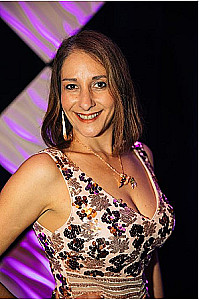Audio Book The Mummy Codex
Description
Vocal Characteristics
Language
EnglishVoice Age
Middle Aged (35-54)Accents
Egyptian North American (General)Transcript
Note: Transcripts are generated using speech recognition software and may contain errors.
in the morning, China's team took all their luggage and equipment down to the ferry docks and waited to cross the river to the city. It didn't take long before they saw the boat approaching. Dr. Nassar was waving happily at them from the deck. Ferry crew and attendants loaded their things onto the spacious flat vessel, and China carefully drove their jeep on board as well. When it was secure, she jumped down from the driver's seat and turned to hug her friend. You're brown as a bean doctor, she said to me, sir, Not enough sunscreen. And as usual, I see you are not wearing your hat. China, he replied, smiling widely. Hats are for tourists, but you are right about the sunscreen I ran out weeks ago. They laughed and hugged again as China was introducing Messier to the rest of her team. The ferry was launched, and they began their trip towards laxer. From the river, they could see the well preserved ruins of the temple and the palace, with the modern buildings that house the many businesses and residents that kept the metropolis buzzing, dominated the background. It was a stunning contrast, but strangely the old and the new fit neatly together, neither one crowding in on the other. The valley stretched out beyond the edge of the structures and verdant belts towards the hills. And then there was the stark white of the dunes in every direction. Beyond that, how long is the ferry ride? Nous, Sir, China asked. It will be about 45 minutes to get across China he replied. Very well, then Please take the opportunity to fill me in, Doctor, she said. Thousands of years ago, the ancient Egyptians would only make the journey across this holy river when a very important person had died and they were to be buried in the great necropolis, which we now call the Valley of the Kings. The funeral and burial of a royal ancient Egyptian was a complex process. The preserved body and its sarcophagus would lie in state on a Palin kin inside the Great Temple of Almond raw for several days, at the end of which the family would offer judgments on the character and behavior of the king to the city's officials, making their case why you should be allowed into the afterlife. When the officials were satisfied, the sarcophagus would be borne out of the temple on the Palatine, and the people who would be attending the body would form up, around and behind it accordingly. At the front were Mourners, usually women who were paid to cry loudly and sob while covering their heads with dust. Behind the Mourners came the family of the deceased and various officials. The procession then made its way to the edge of the Nile, where all the participants were required to board boats and crossed the river to the western side, the favorite location for burials. All the boats accepting that which bore the pharaoh's body, would remain at the river bank. The funerary boat would be dragged all the way to the tomb. It would have been shaped somewhat like a barge over 100 ft long and weighing as much as 45 tons to navigate the Nile in one of these required 12 oarsmen, six on each side. When a pharaoh was buried, ancient Egyptians believed he would need a boat in the afterlife, so they buried at least one funeral boat, either inside or near the tomb. Having crossed relatives were positioned at either end of the barge, which was usually drawn by oxen, with two of the female relatives or priestesses acting the roles of goddesses, isis and lefties. Other participants carried canopic jars and other grave goods while hired Mourners, dancers, musicians and priests would follow the concluding funerary rites to place in front of the tomb. The money was raised up right for the opening of the mouth ceremony. This was an elaborate ritual performed by priests so the dead person could use all their senses in the afterlife. The practice is involved in this ceremony included purification, anointing and the reciting of prayers and spells, as well as touching the money with ritual objects to restore the senses. Then food and clothing were offered to the dead person, and Mourners participated in the funeral banquet. The mummy was then placed in the burial chamber of the tomb, fully prepared for the afterlife because it was customary for Egyptians to bury west of the metropolis. It has become easier as we gained more knowledge of their customs to locate the burial places of their time. A year ago, when geologists began studying satellite images of the eastern hills and the Wadi below, they came across some strange formations in the sand. They had been in search of new aquifers to help reclaim more farmland. But what they found was a series of underground passages, which they thought were part of the ancient city. What have you to do so far? Dr Nasir? Oscar asked eagerly. It seems we have found evidence of an underground citadel that Uncle Naughton's grand vizier I is said to have constructed. He replied. Such a structure had been made mention of on a papyrus scroll found among the Amarna letters.
